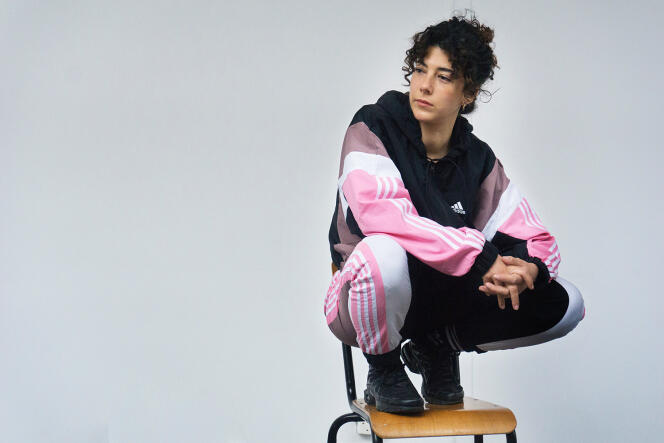It is a short sentence, without bitterness, but whose echo has long “haunted” Mohamed Bourouissa. In 2009, the Franco-Algerian visual artist, who since his beginnings has questioned the representation of marginalized people, began a correspondence with one of his incarcerated relatives. From the SMS and images exchanged, he produces a video work, Timeout (2009), quickly purchased by the collector François Pinault. “My friend liked the film, but he said to me: “You know, Mohamed, we still laugh a lot in prison,” says the artist. I thought maybe I had failed to grasp this dimension…”
Thus, when the LaM, the Lille museum of modern art – where Mohamed Bourouissa, 45, is exhibited in majesty until January 21, 2024, before having the honors of the Palais de Tokyo, in Paris, between February and July –, offers to lead workshops in prison, he accepts and immediately thinks back to his friend’s sentence. Rather than working with them on photos, clips or sculptures, he thinks about live performance, which is foreign to him, “to a form of stand-up” to show that “humor can help keep you in detention”. The result, Women’s quarters, is a one-off on stage created at the T2G Théâtre de Gennevilliers (Hauts-de-Seine), until October 23 as part of the Autumn Festival.
During the preparatory work, he immersed himself in the concomitant reading ofAntigone, by Sophocles (around 441 BC) and Anouilh (1946), and thinks of highlighting a heroine figure. “And then, apart from the series Orange Is the New Black, few works have shown the characters of inmates. » The man whose work often breaks masculine codes therefore asks LaM to go to a women’s prison, accompanied by the director, screenwriter and performer Zazon Castro.
From the first to the last day of prison
In July 2022, they entered the Lille-Loos-Sequedin prison center together. For almost two months, they will hold workshops with a dozen inmates, aged between 20 and 60, whose reason for incarceration they do not know. “We went in with the idea of writing something with them, but our exchanges took the form of more spontaneous discussions. » The round tables, sometimes liberating, funny or electric, become an opportunity to discuss the relationship to justice or disobedience of these women, the description of their daily life, their addictions, their children and the shame felt towards them , key spaces in the prison (such as the laundry room), music or TV programs that they enjoy.
You have 50.15% of this article left to read. The rest is reserved for subscribers.
